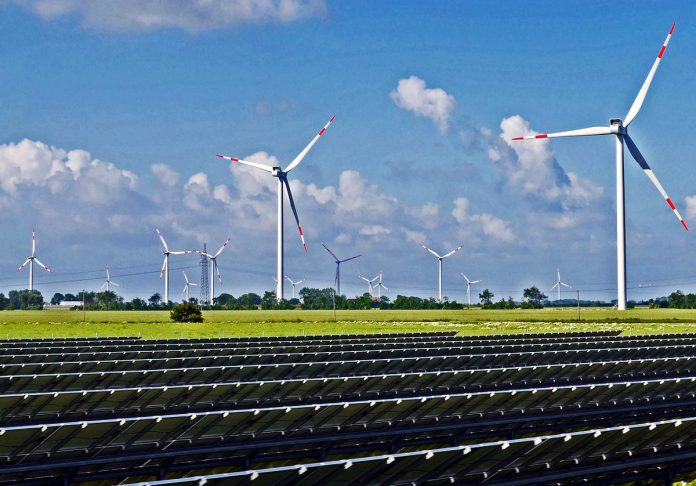This article is written by Shruti Yadav, from Jagran Lakecity, Bhopal. This article talks about the commercialisation and decentralisation of renewable energy as well as the carbon tax.
Table of Contents
Introduction
In a 2018 survey conducted by the World Bank, figures showed that around 200 million people in India are still devoid of electricity. India is, however, the third-largest producer as well as consumer of electricity. But the inadequate distribution of energy has been a big issue. Environmental issues of using fossil fuels as energy resources like air and water pollution, their scarcity and near exhaustibility, and energy loss during transmission have also been reasons for concern. There was a dire need for an environmentally healthy energy production source present in abundance, or one that would not exhaust. The solutions to these issues came to be decentralisation and commercialisation of renewable energy. Also, to discourage companies from still using fossil fuels and emitting carbon into the atmosphere in any way, they had to be made liable for causing damage to the environment. Therefore, carbon tax entered into the equation and made for a great way to reduce carbon emissions. Income generated through it could be used to better the climate and environment.
What is commercialisation of renewable energy?
The commercialisation of renewable energy means bringing into action resources involving renewable energy technologies of over a hundred years or three generations.
First-generation technologies
They are already in use and are economically viable, they include:
- Biomass: a fuel that is made from organic materials, a sustainable source of energy
- Hydroelectricity: made by generators that turn by the flow of water.
- Geothermal power: generated from geothermal energy using dry steam power stations, flash steam power stations, and binary cycle power stations.
Second-generation technologies
They are market-ready but not widely in use, such as:
- Solar heating: It is a system that relies on heat pumps that transfer the collected heat from the solar collectors to produce energy.
- Photovoltaics: It converts light into energy using materials that exhibit the photovoltaic effect, a phenomenon studied in physics.
- Wind power is the generation of energy from wind. It makes use of the primary energy flow of the atmosphere from the uneven heating of the Earth’s surface due to the sun.
- Solar thermal power plants: They are plants that trap the energy from the Sun to bring fluid to a high temperature. Then this fluid transfers heat to water, making it turn into steam, which is then used to produce energy.
- Bioenergy: It is energy made from biomass or biofuel. Biomass is any natural substance that has sunlight absorbed and stored in the form of chemical energy. Such as wood, waste from forests, yards, or farms and energy crops.
Third-generation technologies
They still require research and development to substantiate into significant contributors as energy producers. They include:
- Biomass gasification: it is a technology involving a controlled process of heat, steam, and oxygen to transform biomass into hydrogen without combustion.
- Hot-dry-rock geothermal power: it is an abundant source of vast thermal energy stored within hot – but essentially dry crystalline basement rocks present in abundance beneath the earth’s exterior.
- Marine energy: the energy produced by ocean waves, tides, salinity, and differences in temperature of oceans. The water movement in the world’s oceans creates vast kinetic energy or energy stored in motion.
Impact on environment
Using fossil fuels to produce power has enormous environmental consequences. The burning of fossil fuels is mainly responsible for greenhouse gas emissions like carbon dioxide, methane, and other pollutants like nitrogen oxide and sulfur dioxide. The emission of such gases leads to severe environmental pollution and global warming. Production of energy through non-renewable resources also leads to contamination of water resources and degradation of land. Ultimately, reducing environmental impacts while producing energy was a significant incentive to shift to renewable energy resources for power generation. Developing technologies that exploit wind, water, sun, and geothermal resources to produce power is critical to address environmental and climate change issues.
Although renewable energy sources produce relatively low GHG emissions and air pollution, transporting and manufacturing them will produce emissions and pollutants. For instance, the production of some photovoltaic cells generates toxic substances that may pollute water resources. Renewable energy installations can also disrupt land, wildlife habitat, flora, and fauna, and some technologies consume excessive quantities of water.
Understanding the impact of renewable energy on the environment is also significant for identifying the drawbacks, researching viable options for utility operations, and mitigating or offsetting these effects. Impact of renewable resources on the environment in-depth and individually are :
Biomass
The burning of biomass for energy and power releases carbon dioxide into the atmosphere. However, biomass sources, such as crops and trees, also capture carbon dioxide during photosynthesis and conceal the emitted carbon dioxide. If trees and other plants absorb as much carbon dioxide as they let out during the biomass burning process; the carbon cycle will remain balanced.
However, in reality, the amount of carbon emitted relies upon the combustion technology, the harvesting of biomass, the type of biomass being used, timing, and the energy resource it replaces. It may not be equivalent to the absorption of carbon by trees.
Consider this example, combustion of wood to produce electricity releases carbon dioxide into the air, but trees will regrow and seize the emitted carbon dioxide. However, forests can take decades to grow again and absorb carbon, so carbon neutrality depends on the time frame of absorption and growth. If companies burn trees faster than planting again and growing or burning trees that would otherwise be left unscathed in a forest, the carbon remains unbalanced.
Apart from the greenhouse gas emission implications, there are several additional environmental consequences to consider:
- Plenty of bioenergy plants use waste, whether it be agricultural or animal, as fuel. However, many energy companies use timber from forest trees leading to deforestation, causing habitat loss, soil erosion, destruction of scenic beauty, and more.
- Also, burning biomass in a solid, liquid, or gaseous state can emit other pollutants like carbon monoxide and nitrogen oxides. In some cases, biomass can emit more pollution than fossil fuels. Unlike carbon dioxide emissions, many of these substances cannot be taken in by new plants. These compounds can lead to several environmental and human health issues if not correctly dealt with.
- Plants require water, when energy companies grow trees and other crops for a bioenergy plant, they use large quantities of water for irrigation. On a bigger scale, this aggravates drought conditions, impacting aquatic habitats and the amount of water available for other purposes (crops, drinking, hydropower).
Some of the environmental drawbacks of bioenergy can be diminished through more sustainable forest management, meticulous food choices, and the way we harvest fuels. Further, research, technology, and policy development can help ensure that future advancements in bioenergy are more environmentally friendly.
Hydropower
Hydropower is an essential source of renewable energy but not devoid of environmental implications. Water quality keeps deteriorating around a hydropower plant. The other consequence of hydropower plants is that they fabricate migration barriers by hindering the natural flows of rivers and therefore affecting the habitat of various aquatic animals and plants.
Greenhouse gas emissions can also occur at hydropower plants. During the construction phase, the emissions can come from producing and transporting the materials needed for the construction and equipment.
Then during the operation and maintenance, the emissions can come from heating or cooling systems and transportation for maintenance work.
Hydropower plants can also lead to an increase in sedimentation.
Due to a hydropower plant, there can be shifts in water level, timing and temperature, affecting the surrounding terrestrial and aquatic ecosystem. The other problems from hydropower projects are the deprivation of biodiversity and ecosystems that perform services that are essential for all life forms. The loss of imminent vegetative communities, wildlife and habitats are a result of land clearance and the reduction of natural vegetation.
Geothermal energy
There are numerous environmental concerns to consider when it comes to building geothermal power capacity.
The main concern of geothermal power plants is surface instability because geothermal plants separate water and steam from reservoirs and release it to the earth. The land above those reservoirs can sink gradually over a period of time. However, most geothermal plants re-inject the water into the earth via an injection to diminish the risk of land subsidence. Moreover, problems that can arise during the operation of geothermal power plants make the nearby areas extremely prone to earthquakes. Geothermal power plants are usually located near geological hotspots that are especially prone to instability. Drilling deep into the earth and removing steam and water can trigger small earthquakes.
Wind energy
As with all energy sources, wind energy can have adverse environmental effects, including the potential to reduce or degrade habitat for wildlife, plants, and fish. Furthermore, spinning turbine blades threaten the existence of flying animals like birds and bats.
Solar energy
Some toxic substances and chemicals are used to make photovoltaic cells convert sunlight into electricity. Some solar thermal plants make use of hazardous fluids to transfer heat. Any leakage of these materials could be dangerous to the environment.
Large solar power plants can affect the environment in their vicinity. Clearing land for construction and power plant placement may have long-term implications on the habitats of native plants and animals. Solar power plants may also require water for cleaning solar collectors and concentrators or for cooling turbine generators. Using large amounts of groundwater or surface water for the same may affect the ecosystems that are dependent on these water resources. Moreover, radiation and beams for such plants can kill a lot of birds and insects.
Economic impact
Renewable energy can have social and economic benefits as well.
Many direct and indirect economic benefits are:
Employment opportunities
The sector provides many different employment opportunities, such as installation, engineering, manufacturing, marketing, sales, and more.
Renewable energy jobs are anticipated to continue to flourish well into the future.
Landowner income
Renewable energy also provides an extra source of income for rural owners of the land, who host wind farms thereon. Farmers can also earn money growing crops to be used as biofuels.
Energy independence
Using renewable energy could aid nations in meeting energy needs domestically, reducing the reliance on foreign nations and susceptibility to capricious overseas energy prices and further reducing reliance on foreign oil.
Stable energy prices
Renewable energy facilities entail a substantial upfront investment, but after installation, they are economical to operate. This facilitates reducing fuel costs and ultimately makes the electricity produced comparatively cheaper. It also means the price of electricity is not constantly fluctuating like fuels, natural gas or coal. This leads to more stable energy prices over the long duration.
What is decentralisation of renewable energy?
Decentralised energy is generated off the primary grid and produced nearby to where it will be consumed, rather than at a large plant away and transmitted through the national grid. Decentralised energy generation requires using several smaller power generation plants and storage units that can be grid-connected to accommodate the power supply.
Decentralised energy can refer to the energy created from waste plants, combined heat and power, district heating and cooling, and geothermal, biomass or solar energy. These plants can provide energy for a single unit, a city or a community.
Need for decentralised renewable energy
Presently used centralised energy planning model neglects energy needs of rural areas and the poor and has also led to environmental degradation. In contrast, the decentralised energy planning model is in the interest of productive utilisation of resources. The individual villages are the minor social units where energy requirements occur. Renewable energy is a result of exploiting natural sources such as water, wind, solar, or biomass. Renewable sources are essentially non-polluting if applied accurately. It is found that small scale power generation systems based on renewable energy sources are more capable and cost-effective. Thus, the focus should be on renewable energy technologies that can be executed locally by communities and small scale producers but can significantly contribute to the national energy supply.
Advantages of decentralised renewable energy
- Among the advantages of decentralizing energy is reducing losses incurred while transmitting energy, making the network more efficient than centralized energy.
- Certainty of supply is developed nationally. Customers do not have to depend on relatively few large and remote power stations.
- There are various economic advantages as well. Long term decentralized energy can endeavour more competitive prices than traditional energy. While the initial cost of installation may be higher, a special decentralized energy tax could create more regular pricing.
- It also helps to diminish carbon emissions as renewable sources increase the overall heat and power system’s efficiency. These are more stable and less vulnerable than centralized energy systems.
Decentralised renewable energy for universal energy access
Countries with a high energy access deficit will need to focus on establishing an efficient transformation of the energy sector to enable access to decentralized renewables for universal energy usage. Initially, this would mean the introduction of on-grid capacity, mini-grid and off-grid renewables into their national electrification plans, which basically means installing plants where there is an energy requirement to cut down on transmission loss. Energy access developments should be based on taking care of the current and future needs of various population groups and establishing different ways for satiating the increasing demand over time. This requires dynamic planning for access to energy that allows for the co-existence and integration of different technologies and system-sizes over time. The planning initiative should be taken together by various stakeholders, including the local private sector and civil society organizations and relevant ministries (health, education, water and agriculture) and governments at the international, national and local levels. Planning needs to be efficient, precise and gender-sensitive.
Carbon tax
What is a carbon tax?
A carbon tax is a charge that a government imposes on any company that burns fossil fuels. The most acclaimed fossil fuels are coal, oil, gasoline, and natural gas. When these fuels, which are rich in carbon content, are burned, they generate greenhouse gases. These gases include carbon dioxide, carbon monoxide, and methane, which lead to global warming and environmental pollution by heating the atmosphere and emitting toxic substances.
The idea of a carbon tax is to exhibit the actual cost of combustion of carbon. Those costs are borne by those who endure the consequences, such as ordinary people, farmers, and eventually the government. Carbon taxes ensure that companies and consumers bear the external costs they impose on society.
Advantages of imposing a carbon tax
The benefits of the tax are.
- Increasing the cost of carbon-based fuels will prompt companies to switch to renewable sources of energy.
- The carbon tax will also raise the price of oils and electricity. Consumers will then become more cautious while using energy, further diminishing greenhouse gas emissions by eliminating wastage of energy.
- Taxes empower industries to find the most cost-effective methods to reduce carbon emissions. That is a more suitable alternative to free-market economies than government control.
The economic impact of a carbon tax
A carbon tax also supports economic growth. For example, in the past 27 years, Sweden’s carbon tax has decreased emissions of greenhouse gases by 26%. During that corresponding period, its economy expanded 78%. A carbon tax can raise significant income. Income generated through carbon taxes could be recovered to consumers in the form of tax refunds or, it could be invested in projects pertaining to climate, such as advancing low-carbon technologies or building flexibility. Research suggests that using the revenues to decrease existing taxes on labour and capital can reduce economic losses and result in net economic gains.
Carbon tax and climate change
Individuals or businesses do not pay or are held responsible for direct costs from emitting greenhouse gases catalyzing climate change and the social damages that impact other people. Greenhouse gas emissions are “negative externalities” that businesses should start considering when making choices.
Policy intrusions of various kinds are necessary to address this concern. A wide range of policy tools is possible. Among them, carbon taxing, that is, charging companies, which emit greenhouse gases, a price equal to the value of the social costs borne through environmental pollution.—is an important policy tool to tackle climate change by discouraging businesses from causing pollution.
Conclusion
Climate change is often christened as the defining issue of our time. This is not an exaggeration. Amid climate change, the global economy is assumed to change profoundly. No country or industry is entirely immune to the forces of change.
Therefore, it is the need of the hour to shift to renewable sources of energy to preserve our environment and carry out sustainable development.
This shift will only be possible through rigorous research and development of technology, decentralisation and commercialisation of renewable energy. Carbon taxing is also a significant way to promote the adoption of renewable energy sources.
References
- https://sustainabledevelopment.un.org/content/documents/17589PB24.pdf
- https://www.nap.edu/read/12619/chapter/7
- https://www.unescap.org/sites/default/files/14.%20FS-Decentralized-energy-system.pdf
- https://www.c2es.org/content/carbon-tax-basics/
LawSikho has created a telegram group for exchanging legal knowledge, referrals, and various opportunities. You can click on this link and join:
https://t.me/joinchat/J_0YrBa4IBSHdpuTfQO_sA
Follow us on Instagram and subscribe to our YouTube channel for more amazing legal content.
 Serato DJ Crack 2025Serato DJ PRO Crack
Serato DJ Crack 2025Serato DJ PRO Crack











 Allow notifications
Allow notifications



